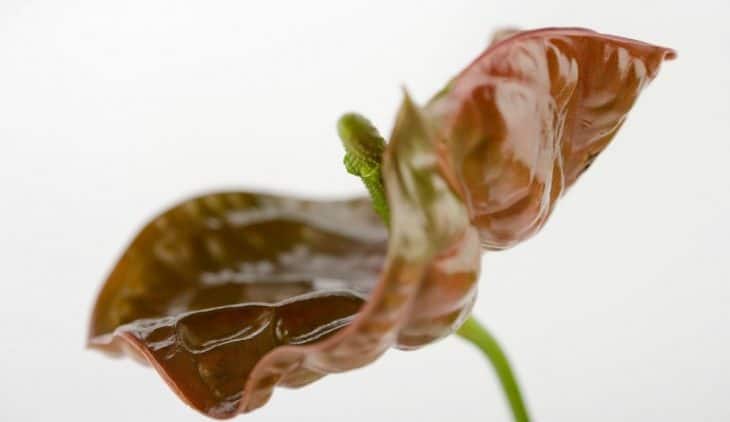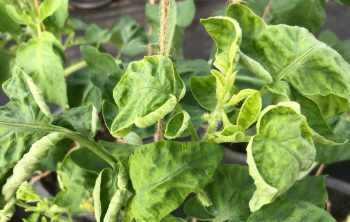When you notice your plants start showing discolored leaves or poor growth, these might be symptoms of a nutrient lockout.
A nutrient lockout can be put as plants’ inability to absorb or take in nutrients. These nutrients are available, but your plants can’t just take in these nutrients; thus, the occurrence of a nutrient lockout.
Nutrient lockouts occur frequently among hydroponic growers. Most of the time, newbies are frightened when this occurs because they might think they did something wrong. The vital thing you should know is that both skilled and newbie growers experience a nutrient lockout. Also, making the right move to solving the problem is important to save your garden.
Nutrient Lockout Symptoms
Identifying nutrient lockout symptoms is very important. If you mistakenly diagnose nutrient lockout as something else, you may do the exact opposite of what’s needed, making matters worse for your plants’ health.
Below are the symptoms you will observe when it comes to diagnosing nutrient lockout:
- Discoloration of leaves
- A few leaf burns.
- Plants stunted growth.
- Deformity of plant structure.

These symptoms are quite confusing because they are similar to plant undernutrition. Some growers may not be conversant with these issues, and they may think their plants need more nutrients, so they add more nutrients.
This worsens the situation because the plants’ environment is exposed to more salts or nutrients. This, in turn, affects the system’s pH, causing more nutrient lockout.
Therefore, ensure you know the correct diagnoses to avoid nutrient overfeeding.
Read more about General Hydroponic Nutrients for Soil
Causes Of Nutrient Lockout
The causes of nutrient lockout are:
- Inappropriate pH Range: inappropriate pH range in
soil or water can cause a nutrient lockout. pH levels should be maintained and kept between 5.5 and 6.5. It should also be measured routinely. Various types of minerals contained in nutrients can only be absorbed by your plant at exact pH ranges. When your pH levels do not meet some particular ranges, an adjustment will be needed quickly.
- Build-up of Excess Minerals: when excess minerals in your reservoir build-up, it will cause a nutrient lockout. Always replace your nutrient solution every week or two weeks and keep your reservoir clean. Also, you can use clean water to rinse off excess nutrients from your plants’ roots.
- Adding too many Nutrients: adding excess nutrients to your garden can also cause your plants not to be able to absorb nutrients. Nutrients contain salts and too much of it increases the pH of your garden causing the nutrient lockout. Ensure you follow instructions and apply the right amount of nutrients to your plant solution.
- Inappropriate Mixing of Hydroponics Nutrients: when you don’t mix your hydroponics nutrients properly, it can cause the inability of the roots of your plants to absorb nutrients. Always read and follow instructions from your nutrient pack or bottle to mix appropriately.
Solutions Nutrient Lockout
After recognizing and confirming nutrient lockout symptoms in your hydroponics or
Flushing
To save your garden, the first thing to do is nutrient flushing. We recommend you clean your soil or growing medium by saturating it with fresh water for 24 hours or so. Also, go ahead and empty your reservoir and rinse it well.
You can also use a special bleaching agent to flush out excess nutrients that have built up in your garden.
After successfully flushing your garden, allow the
How To Reduce Risk Of Nute Lockout
Just as it is important to identify and fix nutrient lockout, it is also crucial to reduce the risk of re-occurrence or running into one.
You can avoid the risk of a nutrient lockout by judiciously checking the pH level of your system. Also, when you want to change your nutrient solution, do so carefully by checking the pH level of your growing medium.
If you notice any changes in pH, flush your system when necessary. You should also ensure you don’t do flushing close to your crop harvesting time.
Calibration-Free LCD Display, High Accuracy Soil pH Pen, Soil pH Monitor for Garden, Lawn, Plant ...
FAQ’s
Can overwatering cause nutrient lockout?
The amount of nitrogen that a plant can take up depends on the amount of water that it receives. If there is too little water, the plant will not be able to take up enough nitrogen and therefore become stressed. However, if there is too much water, plants are subjected to osmotic stress (the ability of the plant to hold water is impaired). This can lead to nutrient lockout, where the plant has no access to nutrients in the soil and cannot take them up.
When the roots are flooded with water, the excess water causes the cells in the root to swell, which reduces the cell’s ability to absorb water and nutrients. Overwatering also damages the root system by reducing the ability of the roots to absorb water and nutrients. In the long term, overwatering can lead to nutrient deficiency.
Can you reverse nutrient lockout?
I would not be so quick to add a new fertilizer. The reason for this is that some fertilizers will lock up nitrogen in the soil and others will do the same with phosphorous. The best way to test is to wait until your soil is at least somewhat aerated, then take a sample and test it. You should be able to tell if there is a problem by testing the soil. If you notice that the soil is acidic, then you may need to add lime. If the soil is alkaline, then you may need to add something that will raise the pH. What I would suggest is to test the soil first, then you can add the new fertilizer.
What does nitrogen toxicity look like?
The first thing that comes to mind when I think of nitrogen toxicity is how it affects plant growth. Nitrogen toxicity often results in stunted growth, which is a condition where the plant grows at a slower rate than normal and is often characterized by a smaller, bushier plant. In addition, nitrogen toxicity often leads to yellowing and chlorosis of the leaves and/or stems, and discoloration or wilting of the leaves. Nitrogen toxicity in plants can result from exposure to nitrogenous fertilizers, excessive nitrogen in the soil, or high nitrogen levels in the soil.
How do you fix overfed plants?
This is a common problem in gardeners' lives, but it's a simple fix. The first thing to do is to decide what type of plant you're dealing with. If the plant is a perennial or shrub, it should be pruned to encourage new growth and to maintain the desired shape.
The next step is to figure out how much fertilizer you've applied. If your soil test results show that the plant requires more nutrients than the soil can provide, your best option is to add composted manure, fish emulsion or kelp meal to the soil around the base of the plant. If you prefer not to use manures, then consider applying a liquid fertilizer. Be sure to follow the manufacturer's instructions for application. For instance, many fertilizers have specific rates for different plants, and you'll want to use those rates when you apply fertilizer.
Bottom Line
The bottom line, nutrient lockout symptoms are common, especially in hydroponics. Regularly taking precautions in advance can avoid or reduce the risk of a nutrient lockout.
Monitoring pH levels, using the correct amount of nutrients, and routinely flushing when necessary are all excellent practices for keeping your garden safe.

Eunice is an enthusiastic gardener with a passion for growing beautiful flowers. She loves nothing more than spending time in her garden, tending to her plants and enjoying the outdoors. Eunice has been gardening for over 15 years and has developed a unique style of landscaping that is both practical and aesthetically pleasing. She is especially fond of growing roses and enjoys experimenting with different varieties and colors. Eunice takes great pride in her garden and often shares the fruits of her labor with friends and family. In her spare time, she enjoys reading gardening magazines and attending local horticulture events. Eunice is passionate about her hobby and is always eager to share her knowledge and experience with others.





